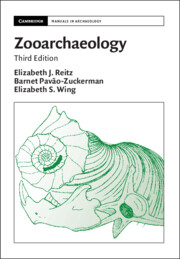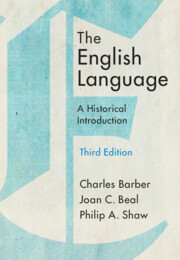Refine search
Actions for selected content:
37874 results in Cambridge Textbooks
Appendix - Suggested answers to practice problems in Chapters 2–13
-
- Book:
- Australian Uniform Evidence Law
- Published online:
- 09 December 2025
- Print publication:
- 08 January 2026, pp 671-685
-
- Chapter
- Export citation
Chapter 1 - Introduction
-
- Book:
- Australian Uniform Evidence Law
- Published online:
- 09 December 2025
- Print publication:
- 08 January 2026, pp 1-25
-
- Chapter
- Export citation
9 - Multilingualism and Language Contact
-
- Book:
- Historical Sociolinguistics
- Published online:
- 19 December 2025
- Print publication:
- 08 January 2026, pp 176-201
-
- Chapter
- Export citation
Contents
-
- Book:
- Historical Sociolinguistics
- Published online:
- 19 December 2025
- Print publication:
- 08 January 2026, pp v-v
-
- Chapter
- Export citation
Chapter 8 - Credibility
-
- Book:
- Australian Uniform Evidence Law
- Published online:
- 09 December 2025
- Print publication:
- 08 January 2026, pp 422-453
-
- Chapter
- Export citation
Chapter 13 - Facilitation of Proof and Ancillary Matters
-
- Book:
- Australian Uniform Evidence Law
- Published online:
- 09 December 2025
- Print publication:
- 08 January 2026, pp 652-666
-
- Chapter
- Export citation
Index
-
- Book:
- Historical Sociolinguistics
- Published online:
- 19 December 2025
- Print publication:
- 08 January 2026, pp 243-248
-
- Chapter
- Export citation

Zooarchaeology
- Coming soon
-
- Expected online publication date:
- January 2026
- Print publication:
- 18 December 2025
-
- Textbook
- Export citation

The English Language
- A Historical Introduction
- Coming soon
-
- Expected online publication date:
- January 2026
- Print publication:
- 08 January 2026
-
- Textbook
- Export citation
10 - Support Vector Machine Classifier
-
- Book:
- Machine Learning with Python
- Published online:
- 22 February 2025
- Print publication:
- 31 December 2025, pp 495-532
-
- Chapter
- Export citation
Chapter 9 - Stress Concentration
-
- Book:
- An Introduction to Solid Mechanics
- Published online:
- 28 February 2025
- Print publication:
- 31 December 2025, pp 201-226
-
- Chapter
- Export citation
1 - Overview of Machine Learning
-
- Book:
- Machine Learning with Python
- Published online:
- 22 February 2025
- Print publication:
- 31 December 2025, pp 1-52
-
- Chapter
- Export citation
Chapter 1 - Introduction to Solid Mechanics
-
- Book:
- An Introduction to Solid Mechanics
- Published online:
- 28 February 2025
- Print publication:
- 31 December 2025, pp 1-8
-
- Chapter
- Export citation
Chapter 4 - Constitutive Equations, Boundary Value Problems, and Concepts of Uniqueness and Superposition
-
- Book:
- An Introduction to Solid Mechanics
- Published online:
- 28 February 2025
- Print publication:
- 31 December 2025, pp 60-89
-
- Chapter
- Export citation
16 - Artificial Neural Network
-
- Book:
- Machine Learning with Python
- Published online:
- 22 February 2025
- Print publication:
- 31 December 2025, pp 821-864
-
- Chapter
- Export citation
Chapter 6 - Conduction of Heat
-
- Book:
- Heat and Thermodynamics
- Published online:
- 06 June 2025
- Print publication:
- 31 December 2025, pp 292-334
-
- Chapter
- Export citation
Index
-
- Book:
- An Introduction to Solid Mechanics
- Published online:
- 28 February 2025
- Print publication:
- 31 December 2025, pp 309-311
-
- Chapter
- Export citation
13 - Implementation of Clustering
-
- Book:
- Machine Learning with Python
- Published online:
- 22 February 2025
- Print publication:
- 31 December 2025, pp 699-738
-
- Chapter
- Export citation
Dedication
-
- Book:
- Heat and Thermodynamics
- Published online:
- 06 June 2025
- Print publication:
- 31 December 2025, pp v-vi
-
- Chapter
- Export citation
Frontmatter
-
- Book:
- Heat and Thermodynamics
- Published online:
- 06 June 2025
- Print publication:
- 31 December 2025, pp i-iv
-
- Chapter
- Export citation
